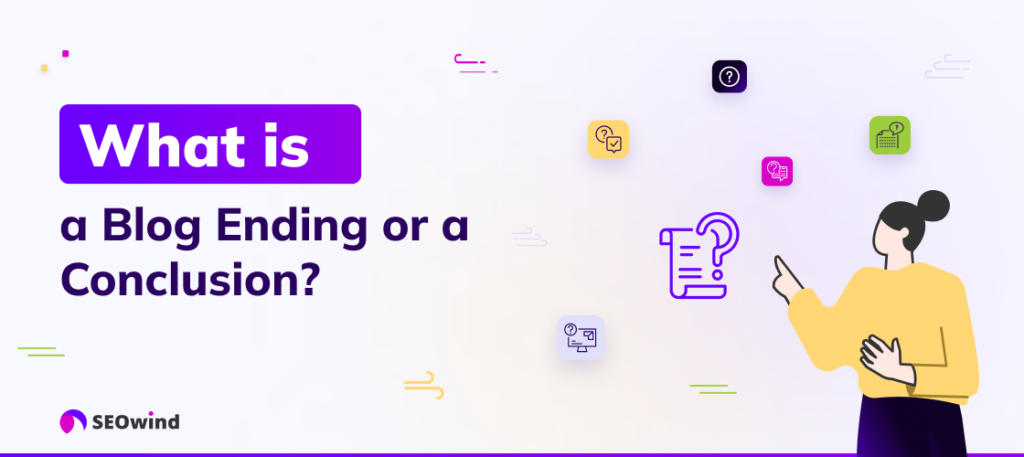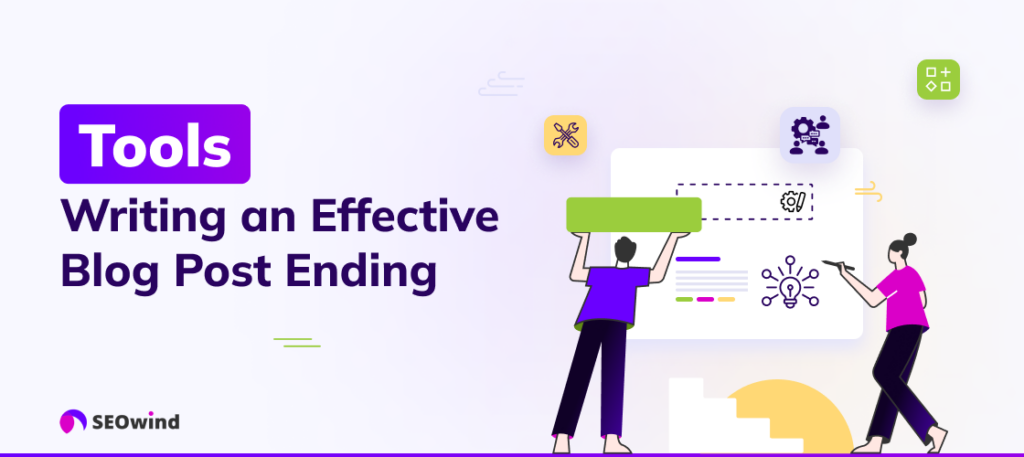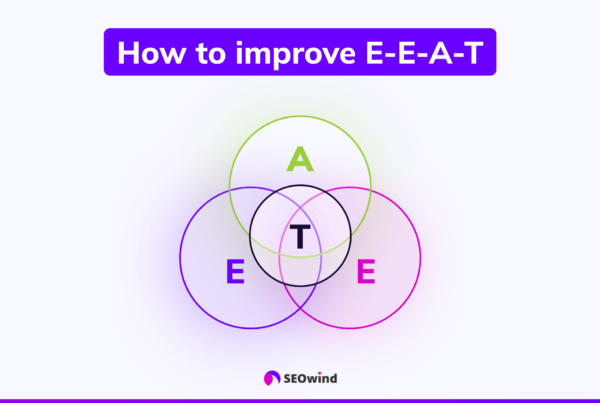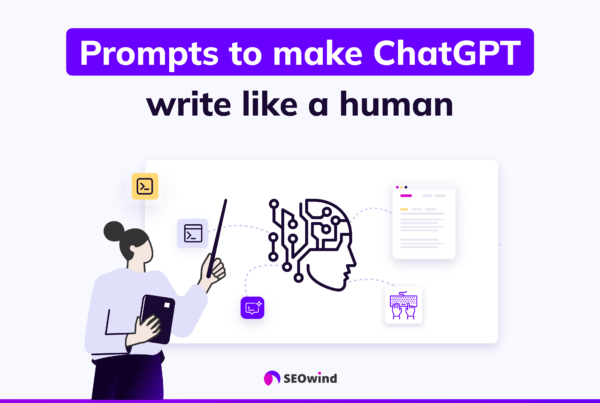First impressions matter, but what about the final ones? The art of blogging isn’t limited to captivating introductions and engaging content. It’s equally essential to focus on how you end your blog posts. Imagine reaching the summit of an exhilarating hike only to find an underwhelming view. It can minimize the thrill experienced thus far. Likewise, a weak or abrupt blog post ending can undermine your excellent work leading up to it. This article will explore closing strategies – how to end a blog post with maximum impact.
What is a Blog Ending or a Conclusion?

A conclusion serves as the final part of your blog post. In this area, you cohesively reinstate the key points discussed throughout the piece. But it’s more than mere repetition – it provides closure, sparking intellectual curiosity while compelling readers toward action.
Therefore, like signing off letters or bidding goodbye after a heartwarming conversation, you’re essentially doing likewise with your audience -sealing the experience uniquely and memorably. Remember that all endings aren’t created equal; hence knowing diverse ways to conclude blogs will equip you with creative liberty to craft compelling endings for various topics.
Remember – mastering how-to-end articles can significantly amplify their appeal and effectiveness!
What are the Benefits of a Good Blog Post Ending?

There is more to blog writing than creating an eye-catching headline and engaging content. Learning how to end a blog post effectively can elevate your piece from good to exceptional. Why? Let’s delve into some benefits that compelling conclusions offer.
- Ensures Complete Consumption: Your audience may wander away without a clear signal for the ending. A well-crafted conclusion ushers them smoothly toward the blog end, ensuring they consume your full value proposition.
- Enhances User Engagement: When done right, a blog’s conclusion can spark interactions. Using techniques such as posing questions or inviting comments encourages your readers to engage with you or fellow readers.
- Drives Desired Actions: One key advantage of thriving blogging practices is subtly guiding behavior. If you’re wondering how to end a blog post for maximum effect, consider adding Call-To-Actions (CTAs). These cleverly push readers towards actions that benefit your brand, like purchasing products, signing up for newsletters, or sharing on social media.
- Improves Dwell Time: A thoughtfully-concluded post contributes positively to SEO efforts by improving ‘dwell time.’ Increased interaction times insinuate quality content in search engine algorithms’ eyes — leading to improved rankings.
- Reinforces Key Messages: In the grand scheme of things, concluding a blog gives you one last shot at hammering home your main points before bidding goodbye to the reader until the next time.
- Influences Reader Memory: Humans remember endings – the “recency effect.” A profound restatement of central themes lingers in their minds long after reading.
This isn’t an exhaustive list of why it matters how you conclude blogs. Still, it provides insight into its importance when implementing an online communication strategy. Understanding these benefits fuels your resolve to use more creative ways to end a blog effectively.
How to End a Blog – 15+ Different Ways to Write Blog Post Conclusions

Ending a blog post can become an art form – and the clever blogger uses this conclusion to leave readers with a potent feeling. Distilled down, it becomes your blog’s final handshake with your audience. Wondering how to end a blog post effectively? Here are over fifteen ways to wrap up an article for maximum impact.
1. End the Blog with a Summary or Multiple Points

One of the finest strategies for closing is using summaries or multiple points in the final part of your blog.
This method involves reiterating your piece’s key takeaways and highlights, thereby providing an organized wrap-up. It’s handy when you’ve covered numerous complex ideas, as it offers your reader clear takeaways.
There are three crucial steps in utilizing this strategy:
- Identify major themes: Firstly, ensure you discern the primary concepts in your blog post. Trace these throughout your text to create a concise but comprehensive conclusion formula.
- Synthesis: Link these core points together in a coherent manner that imparts value to readers. Aim for brevity yet maintain clarity.
- Restate: Rephrase your established points instead of lethargically copying earlier phrases. This invigorates your post, ensuring readers don’t feel tired of repetition.
Employing summarization or concentrating on critical elements pits you as an authority in the subject matter while enhancing readability – two crucial considerations in ending an article most effectively.
Moreover, when resources allow, consider appending notable infographics or associative images; visual aids can enhance comprehension significantly while adding aesthetic value to sections necessitating dense reading.
Lastly, remember that all lessons imparted within this format should endow knowledge until the point – ensuring maximum engagement is guaranteed from the starting line until the blog end!
2. End by asking a question

One proven technique to end a blog post is wrapping up your content by posing an intriguing question. This isn’t any question but one directly related to what you discussed in your blog.
An intelligent, relevant question serves multiple purposes:
- Engages Readers: Ending with a well-thought-out query encourages reader engagement and fosters conversation.
- Prompts Reflection: It invites readers to reflect upon the points laid out throughout your post and consider their stance.
- Facilitates Commenting: The more reflective and thought-provoking your concluding inquiry, the more motivated readers feel to leave comments.
In effect, posing a meaningful question at the end provides space for dialogic interaction between you and your readers, fostering a long-term relationship built upon shared learning and exchanging ideas.
Suppose you wrote an analytical piece about sustainable living practices; you could conclude with something like: “What measures have you adopted for a greener living experience?”. Or suppose your post centers around learning strategies – wrap it up with “How do you ensure effective learning? Share some of your unique approaches.” Remember. Each question should act as an open door inviting further dialogue on what has been presented.
When used correctly — without sounding forced or overly complex––ending blogs with questions can be quite beneficial. Practice this strategy, then let me know: How has implementing strategic questioning improved your writing prowess?
3. End with a CTA (Call-to-Action)

A compelling way to end a blog post is by incorporating a call-to-action or, as it’s often referred to in the industry, a CTA. Imagine it as your final word in persuading readers to take an action that aligns with your objectives.
First, crafting an enticing CTA requires finessing strategy and an instinctual understanding of your reader’s behavior. Consider a well-worded CTA encouraging engagement and forging stronger relationships between you and your audience.
Firstly, consider what action you want readers to take after reading your article. It might be subscribing to a newsletter or email list, downloading an eBook or whitepaper, purchasing products or services, or sharing the post on their social media platforms. This list can continue ad infinitum depending upon the specifics of unique scenarios.
Here are some tips for creating effective CTAs:
- Be clear and concise: Keep your call-to-action brief yet potent. Overwhelming information might deter the reader from taking the desired action.
- Use commanding verbs: Start your sentence with strong instruction verbs like “join,” “find out more,” or “start.” They inspire immediate responses.
- Give them a reason: Specify why they should take the desired action. Will they gain knowledge? Save money? It’s always beneficial laying down incentives quite plainly.
- Make it esteemed: If realizing scarcity or limited-time offers applies in any manner, shape, or form, employ these classic marketing techniques for igniting urgency into your conclusion formula.
Consider this exercise akin to wrapping up a compelling story where you seek emotional satisfaction and tangible frisson, moving them from passive consumption into a dynamic interaction role toward participation.
Keep experimenting with different types of calls-to-action to effectively end blog posts and see what works best to achieve maximum impact.
4. Direct the Readers to Read Something Further

Like a riveting novel that leaves its readers yearning for more, your blog post should do the same. However, unlike a novel, you have numerous ways to lead the reader down the rabbit hole of your content in the blogging sphere.
Leading your audience deeper into your site is one way to end a blog post with maximum impact. This strategy offers growth in engagement rates and forges stronger connections with your readership – two integral benefits you can’t overlook.
Directing readers involves pointing them to other links to related content within your website or blog. For instance, recommending another article that expands on a point briefly touched upon in the current post will keep them hooked longer.
You could also entice readers by linking to previous posts or suggesting upcoming posts they might find interesting, given their interest in the current topic. Notably, this works great if you thread interconnected ideas across different articles.
Remember these simple tips when guiding users further:
- Use clear anchor texts to link articles.
- Encourage engagement through persuasive ‘sneak peeks’ into subsequent reads.
- Make related content easily accessible and avoid broken links at all costs.
Proficiently execute this “how to end a blog” tip and render an engaging reading journey for every visitor on your site while improving SEO ranking – it’s an all-around win! Be creative and make those calls to action irresistible. Their sole purpose is to ensure no reader gets off at just one stop: Your Blog Central Station.
As we wrap up this section, I would love nothing more than for you to read on about other strategies to beautifully conclude examples of masterful blogging—paving the seamless road from introduction to an impactful blog end. Done correctly, this method significantly enhances reader retention, ensuring continued visits and interactions, ultimately driving your blogging goals forward.
5. End by Starting a Discussion Question
An often underutilized yet potent tactic in comprehending how to end a blog post is utilizing discussion questions as anchors. By seeding a topic of conversation, you are kindling the spark for reader engagement and interaction on your platform.
Why Implement this Strategy?
Indeed, the prospect might appear daunting; after all, it’s of course not every day that one court’s controversial dialogues or debates are in their comment section! Yet, here lies an opportunity for growth and connection with your readership community and your understanding of diverse perspectives.
Here’s why:
- Enhances Reader Engagement: This approach sparks interest and facilitates active audience participation. Interactive content fosters stronger connections between you and your readers.
- Builds Community: As readers interact with each other over common interests or divergent observations, they form a sense of community centered around your blog. The more stimulated these discussions are, the more vibrant your community becomes.
- Creates Valuable Content: Lastly, when you initiate discussions on engaging topics related to your post, the resultant contributions can sometimes even outshine the original material! Comments ripe with intrigue create value-added content for page visitors straying into the discussion arena.
When planning to end a blog post, choose relevant discussion questions closely tied to your narrative. Remember: fertile soil cultivates bountiful crops! Prepare ground that encourages productive dialogue rather than encouraging contention or aimless chat.
Ask open-ended questions that probe deeper thought processes instead of simple yes/no queries – think about inspiring dialogue that adds value to your article.
This way, by leading them down this road of curiosity-based inquiry at the blog end, you’re fostering longer dwell times on-page (and consequently better SEO rankings) while simultaneously strengthening audience engagement – a win-win!
6. End by Answering the 5 W’s in Your Blog Posts

Bringing closure to your blog post can be accomplished with a time-honored technique, famously known as answering the 5 W’s – who, what, when, where, and why. This strategy is especially beneficial for beginners wondering how to end a blog post effectively.
The “who” refers to acknowledging your target audience or key persons involved in your topic. Wrapping up your article by highlighting its importance often strengthens your argument. Contrarily, you should not neglect the “what” part of this formula into how to end an article – it essentially summarizes what core message or idea has been conveyed throughout your writing.
Next in line are “when” and “where.” If relevant to your content matter, provide contextual information on the time frame or setting that will round off the arguments made in the piece.
Last but certainly not least comes “why.” Explain the significance behind what you wrote about and reinforce its relevance for readers’ everyday lives or fields of interest.
In essence, these five questions tie everything together coherently at the end of a blog post: giving due importance to participants involved (“Who”), summarizing critical subject matter (“What”), including additional context (“When,” “Where”) and cementing its overall importance (“Why”). When appropriately employed, answering these questions forms a practical conclusion formula ensuring every aspect of your topic has been covered conclusively.
7. End on an Emotional Note

One productive technique to end a blog post is eliciting robust emotional responses from your readership, ranging from happiness, anticipation, and perplexity to heartache! An emotional ending not just opens the avenue for deeper reader connection. Still, it also strongly enhances the likelihood of them remembering your writing and potentially interacting more.
So how do you proceed with crafting such endings? You may wish to share a striking anecdote of your subject matter, extend your horizon beyond the topic by showcasing its broader implications, or perhaps even wrap up with a charming quote that resonates deeply with your content.
Here’s how to end a blog post on an emotional note:
- Use evocative language: Your choice of words has power – they can make people laugh, cry, or feel moved. Therefore, employ vibrant descriptive linguistic forms to paint a vivid picture in your audience’s mind.
- Invoke empathy: Place your readers in someone else’s shoes through a compelling narration of events or experiences. If they can ascertain themselves in those circumstances, higher are the chances they will vibe emotionally with the narrative.
- Deliver an impactful sentence at the end: Summarize crucial elements of your blog post or bring fresh attention to overlooked factors that stimulate intense feelings in readers.
Remember that leveraging emotions isn’t about manipulation. Rather, it is an intimate tool for constructing authenticity and fostering bonding among community members. Make sure whatever emotion you opt for aligns naturally with what you discussed throughout your article while concurrently enriching their experience. Thus wraps up our instructions regarding how to end a blog on an audibly resonant emotional note!
8. If it’s a Series of Blogs, Tell Them What They Should Expect Next.

When the content you’re creating forms part of an ongoing series, it’s vital to let your readers know what lies ahead. This strategy satisfies their curiosity and builds anticipation for your next post – an effective way to end a blog post.
In this context, the blog end could be designed to leave an open loop in the reader’s mind. You might hint at an upcoming topic or disclose a compelling title for your future article. Such tactics enhance the chances of readers returning to consume more from your collection of work.
For instance, consider using phrases like “In our next installment…,” or “Stay tuned for our upcoming exploration into…”. These transitions signify continuity and assure readers that more valuable content is coming.
So, when concluding example blogs in a series, provide a clear road map for subsequent articles. Inject some mystery if possible! The goal here is to evoke intrigue within the reader, making them eager and excited for what’s coming up next.
To put it simply:
- Disclose parts of topics that will be discussed in future posts,
- Create suspense by teasing potential revelations,
- And most importantly – build anticipation with compelling hooks!
Doing these ensures both return visits while increasing engagement opportunities within your blogging platform. Following this approach goes beyond just ending one article; it sets up momentum three steps ahead to sustain reader interest over time.
9. Ask the Reader to Share Your Post

Enhancing your blog’s outreach can be simplified by encouraging readers to share your content. This approach is one of the most straightforward ways to end a blog post. In doing so, you invite participation while also multiplying your audience exponentially.
The trick here is not merely suggesting but casually prompting the user to share your work on their social media platforms or with friends who might find it interesting, helpful or valuable. Be sure not to sound forceful; for example, make it a light-hearted request at the end of your blog. People often need just a little nudge and will be happy to spread insightful information that they find useful.
Phrases like “Did you find this article informative? Feel free to share!” or “Show some love by sharing this post!” can add an exciting dynamic to your blog, making it more interactive and effective.
Remember that people enjoy being part of a community with shared interests – by asking them to participate in promoting your work, you are, in essence, inviting them into yours.
In addition, people generally trust recommendations from their peers more than advertisements they see online. Therefore, by utilizing this strategy to end a blog post, you could expand your reach far beyond what search engines or paid promotions would enable.
10. End Your Blog with FAQs

Understanding how to end a blog post on a high note is fundamental for any successful blogger. One compelling strategy often overlooked by many content creators includes rounding up their textual journey with carefully curated Frequently Asked Questions (FAQs).
This distinctive approach turns your blog and summary conclusion into an informative mini guide, answering potential queries before they even arise in the reader’s mind. A well-thought FAQ section demonstrates your industry insight while clearing doubts that could linger in the reader’s mind.
An easily digestible list can be your perfect blogging ending, summarizing critical thoughts throughout the post. Here are four ways this conclusion formula would work:
- Answer lingering questions: Assumptions won’t do when concluding. Be direct and enlightening by addressing common inquiries about your article’s topic.
- Show yourself as a resource: Enhance credibility by answering queries that let readers know you’re an authoritative and helpful source within your domain.
- Engage with the readers: Encourage further engagement by welcoming additional questions in the comments section, indirectly inviting them to be part of ongoing discussions.
- Represent complex subjects: Summarize intricate ideas expressed in your blog through easily answerable questions at the end, making it easier for comprehension.
The beauty of using FAQs to capstone your website or blog lies in its simplicity and effectiveness. Not just brings closure to “how to end an article.” Still, it also opens channels for extended interaction between you and your audience. Adopting this strategy will add value to each piece of content you craft moving forward, enabling constructive dialogue while ending each post convincingly and informatively.
11. Promote your product or service. Subtly.
Ending a blog post is an art in itself. It requires finesse and subtlety, particularly when the intent lies in promoting a specific product or service. The concept behind this approach to end a blog post points towards integrating your offerings into the article’s conclusion without disrupting the flow of content or coming off as forceful sales pitching.
First and foremost, visualize your target audience before you commence writing. Consider their potential questions and the problems they may be seeking answers for within your content area—and then outline how precisely your product or service solves these issues.
For instance, if you’re concluding a blog post about efficient time management, gently weave into the narrative how your productivity app helps track hours spent on different tasks and optimizes work schedules.
When using this strategy to conclude a blog post, remain discreet but clear enough so readers can associate your solution with their needs. This delicate balance is crucial for maintaining reader interest and presenting information in an engaging manner—an overt promotion might cause them to disengage completely.
Moreover, while promoting subtly at the end of a blog post:
- Use testimonials: Quoting real users’ experiences with your product/service builds trust.
- Highlight Features: Mention key features but not extensively—showcase their benefits.
- Use case studies: Provide examples where people have benefited from what you’re offering.
As always, when figuring out how to end a blog post—you are concluding not just to wrap up facts but building bridges for readers that lead towards concrete solutions, which could potentially lie within what your enterprise offers. So take advantage of opportunities without making hard-sell promotions invade and dominate informative content spaces.
12. Provide an Opposite Perspective
A fresh twist on ending a blog post is offering an alternative viewpoint. This approach, also known as playing the devil’s advocate, can stimulate in-depth conversations and encourage readers to think critically about the topic you’ve addressed in your blog.
Usually, throughout our blogging journey, we stick to our viewpoints fiercely. We use supportive evidence and arguments for their credibility. However, providing an opposite perspective towards a subject could spark noteworthy debates and discussions, leading to higher engagement levels in your audience. The key here is being unbiased and fair when representing this contrary viewpoint.
There are two primary ways you could go about this:
- Pose hypothetical questions: For instance, if your blog deals with vegetarianism’s benefits, you might raise questions like “Could meat-eating be sometimes ethically acceptable?” or “Are there scenarios wherein consuming some types of meat might enhance health?”
- Cite studies contradicting your stance: If credible research argues against your main argument, don’t shy away from discussing it briefly at the end of the article.
But remember! Just because you’re giving space to the other side doesn’t mean you are refuting or pointing readers into doubting your point of view. Balance this strategy with respectful discourse while reminding your readers where you stand. This can reaffirm to them why they value content like yours—they appreciate seeing all facets brought to light thoughtfully before making decisions or forming opinions themselves.
So next time, when deciding how to end a blog post, consider presenting an opposing angle for a change; it may help round out your discussion eloquently, leaving readers appreciative of your comprehensive approach.
13. Give Away Something

In learning how to end a blog post, you’ll discover that gifting something to your readers is a powerful closing strategy. It’s an age-old practice—a giveaway pulls at the heartstrings of any individual! The art of giving is known to instigate returns in kind, fortify bonds, and encourage reciprocation.
Mini giveaways can range from digital downloads such as eBooks and cheat sheets, free trials or samples of a service/product you promote, exclusive access to features or resources, or event tickets (webinars, meetups). Just make sure it’s tied with the theme of your blog post. For instance, if you have been penning down strategies about digital marketing, offer an eBook condensing some essential tips. Likewise, as you prepare an ‘end blog’ palette on web development, don’t hesitate to provide valuable coding resources.
Scheduling periodic gifts for your consistent readers will impress upon them the value they gain in frequenting your content space. In an era where interaction is mostly virtual and there’s colossal competition for attention online, this practice can assist in engaging visitors effectively.
Remember, though: restrain yourself from being overly promotional while planning giveaways at the conclusion formula of your article; remain genuine and relevant. This final closure should primarily possess substance rather than merely transactional.
With proper execution, this could be one admirable way to end a blog post enticingly while reeling in more engagement and prospective loyalists.
14. Inspire Your Audience

To leave a lasting impression on your reader, it’s essential that you know how to end a blog post in such a way that the information shared evokes inspiration. It’s not just about dispensing facts or sharing opinions; compelling stories have always been powerful tools for captivating an audience.
A wondrous technique to inspire is offering individual experience as anecdotal evidence, relating personal triumphs or moments of revelation. That humanistic touch can resonate deeply with readers and make them feel more connected with your content.
Consider pointing out potential growth or progress your reader could achieve by implementing ideas expounded in the post. Fostering optimism regarding prospects encourages motivation and engagement.
Here are some nuggets to remember when intending to inspire your readers at the end blog:
- Use real-life experiences: Genuine narratives encourage empathy and propel preparedness toward change.
- Offer positive outcomes: Showcase success possibilities achieved through adhering to established knowledge in your article.
- Encourage continued learning: Explore further resources related to your blog topic, reinforcing commitment towards self-education.
Adopting these strategies will effectively conclude example inspirations woven into your narrative and elevate its overall impact. Shaping a strong emotional connection with your readers takes finesse, but achieving this transforms mere visitors into loyal followers of your content – no better outcome for any blogger!
15. Produce a Teaser

Creating anticipation is an effective tactic for learning how to end a blog post successfully. Closing your blog by producing a teaser for your upcoming content or product instills curiosity and excitement in the reader’s mind, making them look forward to your next update.
There are multiple ways you can create such teasers at the end of a blog:
- Provide a snippet from an upcoming blog.
- Introduce an interesting topic you’ll cover in more detail in future posts.
- Mention an upcoming interview with an influential personality related to the subject matter of your blog.
By injecting mysteriousness into the narrative, you hook your readers and compel them to keep revisiting for updates. However, remember, the intent is not to be deceptive but to spark interest while ensuring what follows is worthwhile and fulfills the promise.
Here are examples of how this closing strategy can work:
“Stay tuned for my next blog post, where I will exclusively interview John Doe, who revolutionized the XYZ industry.”
Or try something like:
“How about hovering cars replacing conventional ones? As intriguing as it sounds, we’ll uncover and examine this possibility in our next write-up!”
When used correctly, this conclusion formula aids greatly in retaining audience engagement until your subsequent publications offer rewarding experiences on both ends – for you and your reader. Hence, learning to produce fantastic teasers is invariably beneficial when considering how to end a blog-end effectively and impactfully!
16. Present an Actionable Solution

Creating a lasting impact on your readers can be nurtured effectively by incorporating a tangible solution at the end of your blog post. This closing strategy aligns well with posts that discuss problems and challenges, showing your audience precisely how to end a troublesome situation.
Exhibiting practical solutions neatly satisfies their quest for knowledge on “how to” accomplish something. Additionally, concluding with actionable advice presents your blog as a valuable resource for getting useful information. It inspires readers to take immediate action based on the guidance given in your post.
For instance, let’s consider you’re writing about health issues related to obesity; how would you glue this ‘actionable solution’ principle into such a context? Instead of merely stating the problem and possible consequences, guide them through simple exercises they could start immediately at home or suggest nutritious food substitutions in their diet.
Listing these suggestions and explaining why these solutions are beneficial is essential. Adding substantiated data from reliable sources can give credibility to your discussions.
Let me share some tips on perfecting this way of ending:
- Make sure the proposed solution directly addresses the topic discussed.
- Your suggested solutions should be easily applied by most of your readers without unnecessary complications.
- Always quote credible sources when drawing statistics or research-backed claims concerning the efficiency of proposed solutions.
- Remember to clarify any technical jargons that might confuse beginners.
Following these points will help reaffirm your position as an authority in this digital space while providing value to all who read your written work.
Lastly, always ask for feedback on the effectiveness of provided solutions from your readers in comments or by prompting them via email newsletters. After all, continuously evolving to cater better to reader interest is key to maintaining successful blogging longevity!
In summary, offering an actionable solution effectively indicates ‘how to end a blog post’ and strengthens reader trust due to its intrinsic value-oriented delivery style.
17. Tell Readers What’s Coming Next

Adding a feeling of anticipation at the end of one chapter is an art known by many successful novelists and filmmakers. And, you know what? This technique also fits perfectly within how to end a blog post. It helps create a dynamic bond with your readers, motivating them to wait for your next blog eagerly.
Keep following my blog because there are exciting things on the way! This sentence has piqued your interest, and that is exactly what we aim for – curiosity combined with an opportunity for continuous learning.
Let me share some different ways this maneuver can work:
- Talking About Future Topic(s): Excited about delving into new topics in your upcoming blogs? Share this excitement with your audience too! A quick note like “In our next conversation, we’ll explore XYZ” could manifest their craving for more content.
- Release Date Pre-Announcement: Build suspense among readers by pre-announcing release dates of future articles or series.
- Upcoming Events / Webinars / Podcasts Announcement: Suppose you host regular live events, webinars, or podcasts related to your blog niche. It’s an excellent strategy to inform readers about these upcoming interactions at the end of each publication.
- Book/Area Preview: If you’re writing an eBook or researching a specific area intending to cover it in future postings, provide an intriguing excerpt from it or a hint about that research.
- Series Continuation Hint: Are you unfolding a particular subject through a series of posts? Remember to add cliffhangers that indicate what’s coming up in the next part.
In doing so, regardless of the method chosen when wrapping up each article, all roads should lead back to keeping readers engaged and excited about subsequent content – ensuring they become loyal followers who regularly visit and recommend your blog.
Tools for Writing an Effective Blog Post Ending

Figuring out how to end a blog post can sometimes be quite challenging. Thankfully, we have access to the trove of digital tools and resources provided by technology that make this process smoother and more efficient. The following are highly recommended tools for effectively concluding your articles.
- Hemingway Editor: This software aids in refining your writing by highlighting complex sentences and common errors, thus enabling you to produce understandable content with a relatable tone. It even provides a readability grade score, guiding you to create blog endings targeted toward your specific audience.
- Grammarly: Beyond detecting spelling and grammatical errors, Grammarly helps maintain coherence throughout your blog post by providing suggestions tailored toward enhancing sentence framing and vocabulary usage. This feature proves incredibly useful in ensuring your conclusion ties in perfectly with the rest of your article.
- Yoast SEO: If you’re using WordPress, Yoast SEO is instrumental since it enhances search engine optimization and guides on ‘readability,’ encouraging engagement until the end of your blog post. It’s particularly remarkable when integrating keywords seamlessly into your closing remarks.
- Thesaurus.com: Varied vocabulary keeps readers engaged until the last word of your posts, painting vivid imagery while succinctly and engagingly reinforcing key points. Thesaurus.com offers synonyms to prevent repetitive language which might bore or repulse readers.
- CoSchedule’s Headline Analyzer: Although primarily used for headlines, it can offer great insights about emotional impact words shopping around in all sections, including conclusions where these elements play vital roles too.
Remember, utilizing these tools doesn’t undermine your writing skills. Rather, they amplify them by granting writers efficiency and precision and enabling them to serve their audiences better!


